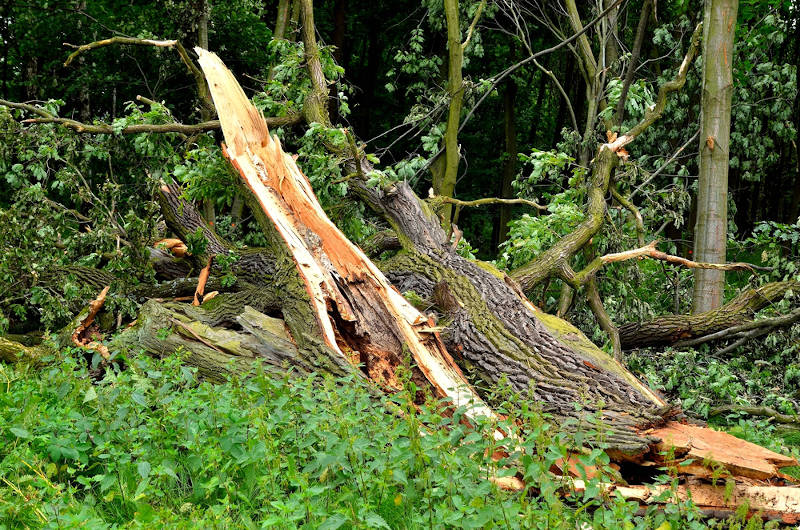
Having a tree on your property get struck by lightning can be a scary experience. Knowing how you should handle it before it happens can help take some of the fear out of it so that you can spring in to action and contact a professional for emergency tree service. After that initial bang, what is next?
What Happens When a Tree Is Stuck? What Damage is Caused?
When a tree is struck by lightning, several physical things happen. You may have noticed that trees that were hit no longer have bark on them. This is due to the water in the tree’s cells being quickly heated up to over the boiling point. As those cells start to boil, the steam knocks the bark right off the tree. Depending on how deep into the tree the lightning reaches, the trunk can even literally explode.
Studies have shown that around 50% of all trees that have been struck by lightning die instantaneously and are not able to be saved, even by a trained professional. There are also certain species of trees that tend to be the most frequently struck – gum, maple, oak, pine, and popular.
What To Do About It
Obviously, a tree that has been struck by lightning comes with some serious safety concerns. It’s important that you call a tree service company for specific recommendations and for a tree risk assessment, even if the tree looks like it is still sturdy.
You should also inspect the tree from a safe distance, if possible. It’s important to be aware that, immediately after impact, the ground does retain some of the electrical charge handed out by the lightning. This can be extremely dangerous, so don’t go over right away.
In addition, some websites claim to have recipes that can help “save” a tree, but you should always rely on the advice of a trained arborist instead of relying on non-proven homemade remedies. While it may be possible to save the tree, there are also ingredients that can be harmful to the tree or the wildlife in the area, so it’s better to let an arborist make that call.
Talk To An Expert
Instead of waiting for an emergency to happen, contact an arborist ahead of time to have tree risk assessments done for all of the trees on your property. After evaluating risk, they can also suggest services that can prevent damage as much as possible should lightning strike. For instance, cabling. Cabling can help keep a trunk splitting or losing limbs, which also provides a small amount of lightning protection. Some lightning protection systems can even divert the bulk of the lightning to a cabling assembly, potentially saving the tree.
There are also other options that can help minimize any potential damage if a lightning strike does occur. Contact us for additional suggestions and information. Stay safe out there!
About Boutte Tree
Located in Atlanta, Georgia, Boutte Tree, Inc has been servicing the community since 2003. They perform both residential and commercial tree services, including tree removal, cabling, and tree risk assessments.
